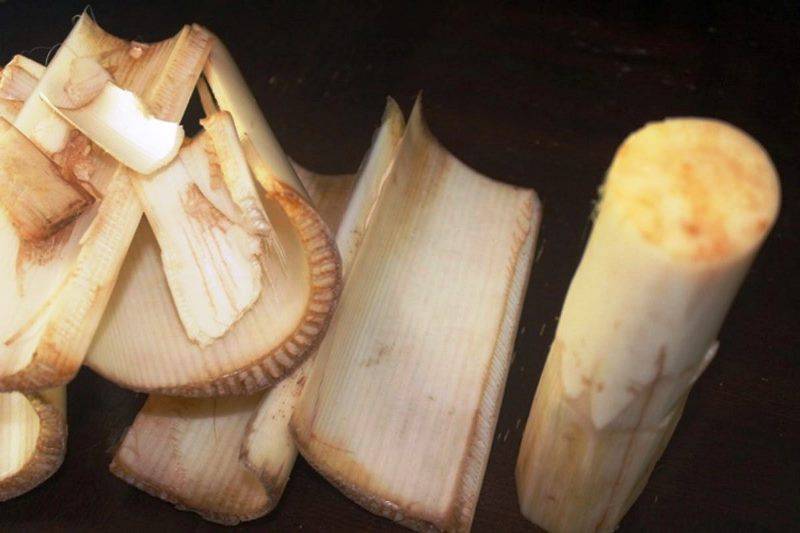
We all know that banana is a perennial plant but the fruit is available all around the year. After the successful harvest of banana the whole plant becomes a byproduct which ultimately for about 80% of the countries goes into waste.
In all around the banana producing countries farmers usually cut down the whole stem of the banana plant for the fruit and let the new younger plant grow for another yield. This makes the whole stem and the inflorescence all to be gone for waste.
Now one might think that bananas waste can easily be managed as it is biodegradable. Why work so hard?
Our world has been ageing and with time food resources are also in risk in the near future as population keeps increasing and so is the use of our natural resources. We humans have taken our environment a lot granted. This is one of the reasons of the present pandemic which we all are going through.
With this pandemic one thing is really cleared and has become transparent that is the availability of resources and the privilege we all bear. Due to the covid induced lockdown millions of people have learned that food isn’t for granted and so are other resources. Many of us have actually started experimenting with the comfort zones of our own. The most popular among these trends is creating one’s own vegetable/fruit garden, all due to the lesson learned about the food scarcity.
Now is the time that we start using every bit and pieces of our plants and food too.
Starting with the banana plant, as it has been producing around 20000 pounds of average waste from a single farm in a year. A normal banana plant till date has been commercially grown as cash crop but now with the coming ages the people should be educated about the byproducts usage.
With proper knowledge and education we all can make and create a huge difference in our surrounding. Let’s start the learning about the different banana byproducts which can be proved useful in a more surprising way.
1. The banana inflorescence: In many of the South Asian countries especially India the flower of the banana plant is used as food. Yes! There are numerous flowers contained and covered by layers of bracts which are the purple or maroon coloured. The flowers are used for food and are eaten as a vegetable.
The inflorescence of the banana plant contains a huge amount of nutrition values. Eating the flowers helps in increasing the menstrual health, keeping away infections(as the extract from the flower has been proven to have antimicrobial properties), promotes kidney function and also helps in reducing anxiety.
The bracts are however used as bio-colourant. It contains many subclasses of flavonoids like anthocyanin, which actually gives the bracts the bright reddish-purple colour which is again a health beneficial product.
2. The banana leaves: In India, banana leaves have been used since ages in temples for religious offerings to god to being used as a serving plate at restaurants and also using it as a wrapper for steamed food preparation.
Apart from this one more uses of this banana plant leaves have been identified by various researchers. The banana leaves rather having fibrous texture, are said to have their own suitable flavours which are incorporated in food. It’s all because of the aldehydes and alcoholic components present inside the leaves membranes.
These leaves, when fermented with some particular oils, provide with tangy/tea-like/cucumber-like flavour. Hence, these leaves are ideal as natural flavour producing byproducts.
3. The stem: Ideally a banana plant comprises of the main stem and then a branched stem called pseudostem. According to recent research, these pseudo stems have high contains of bio-active components like dopamine (induces antimicrobial activity), anthocyanin (health benefits like anti-inflammatory) and phytosterols (lowers glucose levels). These give the pseudostem the properties of being a cure for many disease and infections.
Now the basal part of the stem is usually eaten as a vegetable too. In the Indian market, these are locally known as thor/thur etc.
4. Root bulbs: these root bulbs are also eaten and they taste mostly like sweet potatoes. These root bulbs are more nutritious as it contains nitrogen, glucose and huge amounts of phosphorous.
Now this was all about the food industry where the banana byproducts can be used. Other industries like the paper industry can also use the banana plant for making papers because of the fibrous nature of the whole plant body. Bio-fuel is an another option for using up off the banana by-products as these left over plant bodies when decomposed in a proper environment, leads to a bulk amount of Methane gas. When the leftovers are released those can be used as cattle or animal feed too.
Conclusion: if our farmers and small scale industries take up these ideas, it would not only earn them profit but also make a sustainable environment for all the living beings in the planet. Younger minds should more likely take up such ideas and try bringing change as these not only brings job opportunities for them but also helps them in becoming more thoughtful about the society and our environment.















